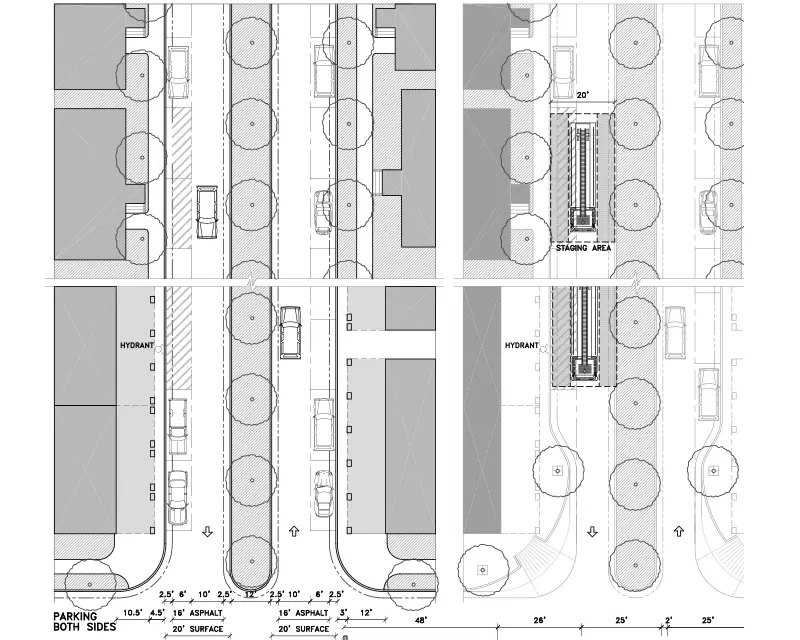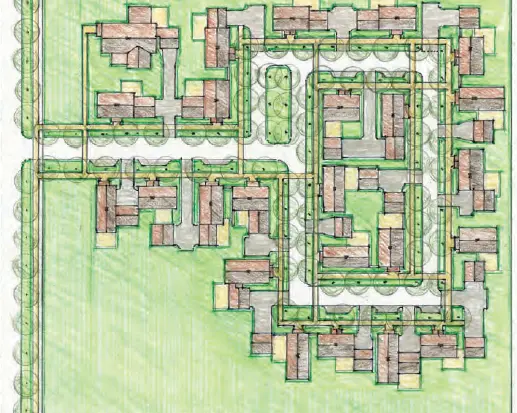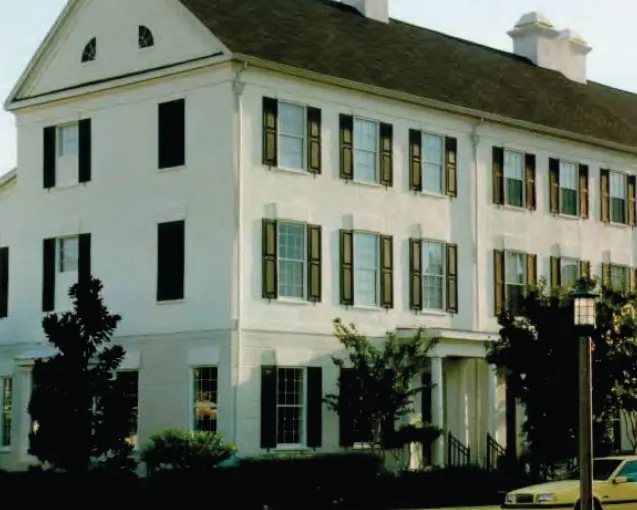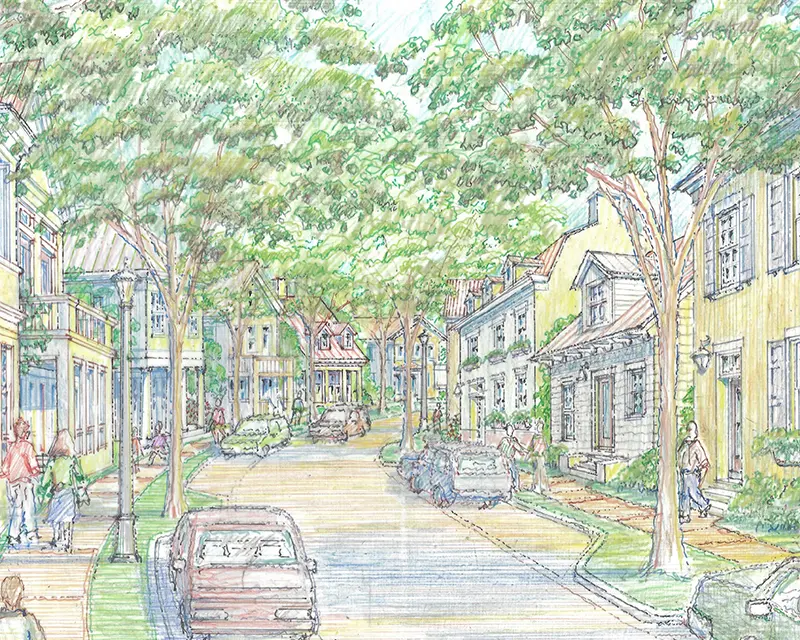Guideline
Non-enforceable, intended as informative, compelling description of smart growth and traditional town making in advocating planning goals to officials, specialists, and participants in the building industry.
As adjunct to a project’s regulations, guidelines illustrate and instruct marketing, development, programming, local and property owner governance, design, and construction.
- PATTERN BOOK: vernaculars of local tradition in southwest Utah, prepared for architecture standards and stylistic palette of a high desert community.
- EMERGENCY VEHICLE: dimensions and geometry of fire apparatus methods, proposed for narrow streets – vehicle turning, set up, traffic clearance, ladder heights, block length.
- INFILL / OVERLAY: to selected zones in existing towns where disinvestment and deterioration compel renewal incentives to developers.
- TRANSECT ZONE: demonstration of constituent parts of each zone along the neighborhood span from center to edge.
- BUILDING TYPE: synopsis of traditional building form for walkable places, based upon four prototypes, nine standard types (and three specific types for each).
Guideline
Non-enforceable, intended as informative, compelling description of smart growth and traditional town making in advocating planning goals to officials, specialists, and participants in the building industry.
As adjunct to a project’s regulations, guidelines illustrate and instruct marketing, development, programming, local and property owner governance, design, and construction.
- PATTERN BOOK: vernaculars of local tradition in southwest Utah, prepared for architecture standards and stylistic palette of a high desert community.
- EMERGENCY VEHICLE: dimensions and geometry of fire apparatus methods, proposed for narrow streets – vehicle turning, set up, traffic clearance, ladder heights, block length.
- INFILL / OVERLAY: to selected zones in existing towns where disinvestment and deterioration compel renewal incentives to developers.
- TRANSECT ZONE: demonstration of constituent parts of each zone along the neighborhood span from center to edge.
- BUILDING TYPE: synopsis of traditional building form for walkable places, based upon four prototypes, nine standard types (and three specific types for each).





